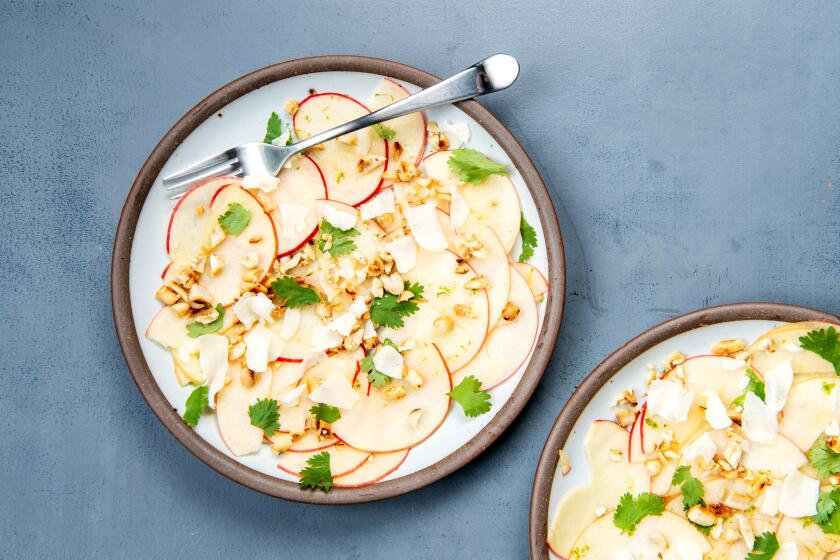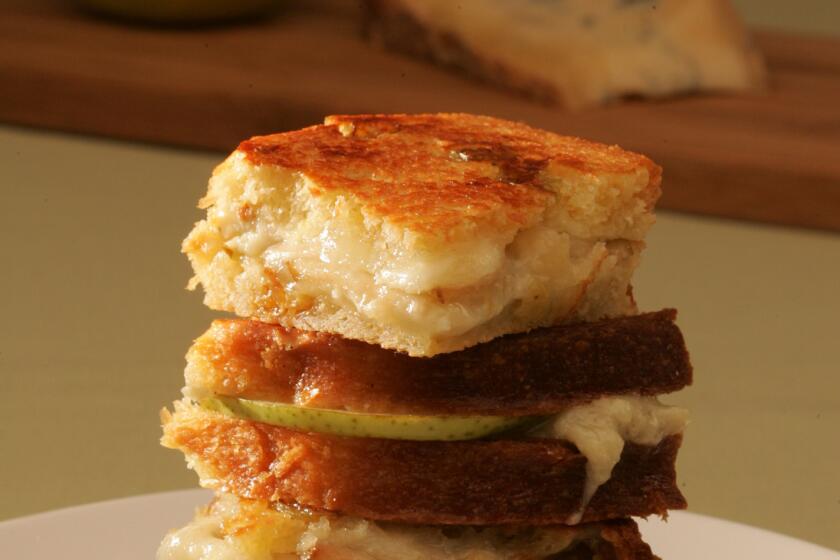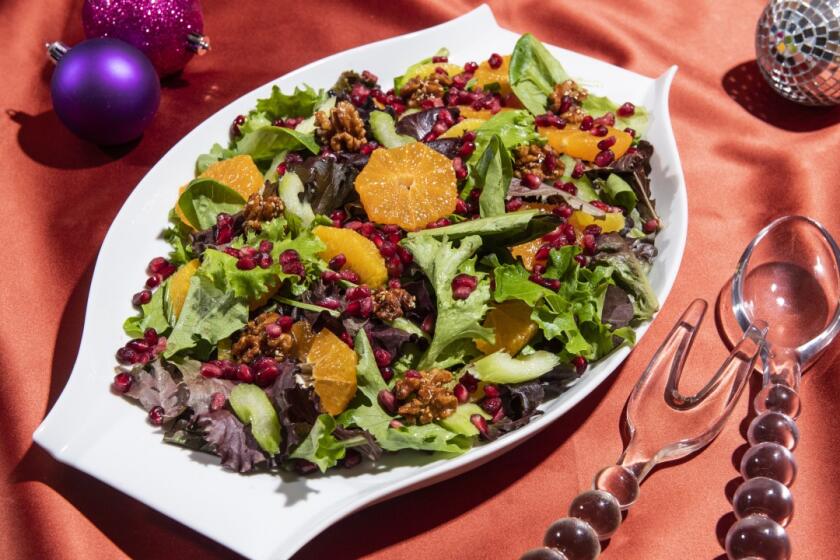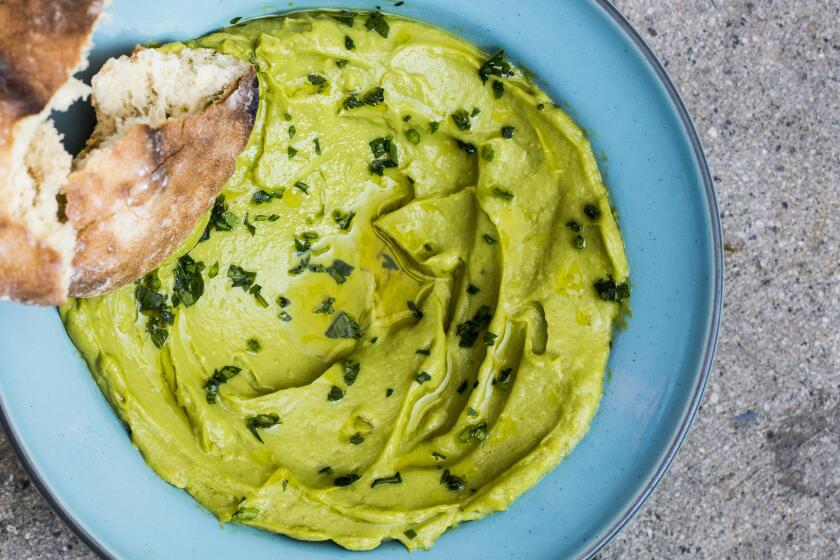What to cook when fall is calling but there’s no chill in the air

- Share via
If you’re like me, then no matter what the temperature is outside, as soon as you see the first seasonal apples and pears and pumpkins hitting the farmers market stands you’re ready for fall. This conflict doesn’t just happen in Southern California. I remember many years trekking upstate in New York at the beginning of October in my sweater — anticipating the chill of the air — only to be sweltering in it hours later and running back to the car to change into a T-shirt and a pair of shorts. So, for once in my life, I’m going to try to meet the season and its produce where reality lives and make dishes that use those iconic autumnal ingredients but in recipes made for the summer heat. Won’t you join me?
Get our Cooking newsletter
Get a taste of Los Angeles — and the world — with recipes and kitchen tricks from the L.A. Times’ Cooking newsletter.
You may occasionally receive promotional content from the Los Angeles Times.
First up will be a shaved apple and peanut salad that uses any tart, crisp apple that you can find and presents it simply with a squeeze of lime, dash of Chinese black vinegar and some shaved Parmesan and toasted peanuts for richness and crunch. Pears are a great match for robust blue cheese, so a warm grilled cheese is the perfect place to show them off, their sweetness balancing the richness of the rest of the ingredients. I’ll roast some acorn squash ahead of time so I can have it chilled from the fridge (my favorite way to eat it) and tossed with more apples and more cheese in this hearty salad.
Foothill pomegranates are already in the market, so I’ll shower them over some greens in this salad, along with some early season citrus, although a regular navel orange also works perfectly. And lastly, the abundance of different avocados — some creamy, some toothsome, some sweeter and richer, some supremely nutty — is delightful to see at the markets, so I’ll pick out a variety I’ve never tried before and make this avocado hummus to use as a dip for all my veggies throughout the week. All these dishes require minimal cooking and keep the temps in your kitchen as cool as the ones you know will arrive in just a few more weeks.
Shaved Apple and Peanut Salad
Crisp apples, toasty peanuts and rich cheese are brightened with a simple drizzle of lime juice and black vinegar.
Grilled blue cheese and pear sandwich
The sweetness of the cool pear in this grilled cheese is the perfect complement to the robust blue cheese.
Roasted acorn squash and apple salad
All you need for a hearty salad are some greens and some pre-roasted acorn squash to balance out the raw chunks of apple and nutty cheese.
Pomegranate and Citrus Salad
Less sweet than later-season varieties, the tart foothill pomegranates make an ideal addition to a simple citrus and greens salad.
Momed's avocado hummus
The traditional hummus flavorings are all here but highlighting nutty, rich avocado instead of chickpeas.
Ask the cooks
I’ve eaten sweet potato biscuits several times but have had no luck baking them. Do you have any suggestions for adding sweet potatoes to a regular biscuit recipe?
— Judy Altman
The problem with adding most any ingredient, except for spices, to a baking recipe is that the proportions of dry and wet ingredients can be thrown off wildly.
Regular biscuits require the moisture given off from the butter and buttermilk to give rise to the dough and make it perfectly moist inside while crunchy and lightly toasted outside. Sweet potatoes are more moist and more dense than regular potatoes so adding them to a biscuit recipe could be a disaster, resulting in leaden, overly gluey pastry.
First, make sure your sweet potato puree is very smooth and chilled so it incorporates as easily as possible into the dough. Then, to compensate for the extra moisture and density, cut the amount of liquid by half and the amount of flour by a quarter.
For your standard biscuit recipe, add ½ cup of sweet potato puree, then mix the dough and see how it feels. Too dry? Add some more liquid. Too wet? Stir in a little flour until it feels manageable. Your first test will not be very tender from all that mixing, but then you’ll know the proper proportions for the next test so they come out tender and light.
There, you’ve just developed your first recipe.
Have a cooking question?
Eat your way across L.A.
Get our weekly Tasting Notes newsletter for reviews, news and more.
You may occasionally receive promotional content from the Los Angeles Times.









